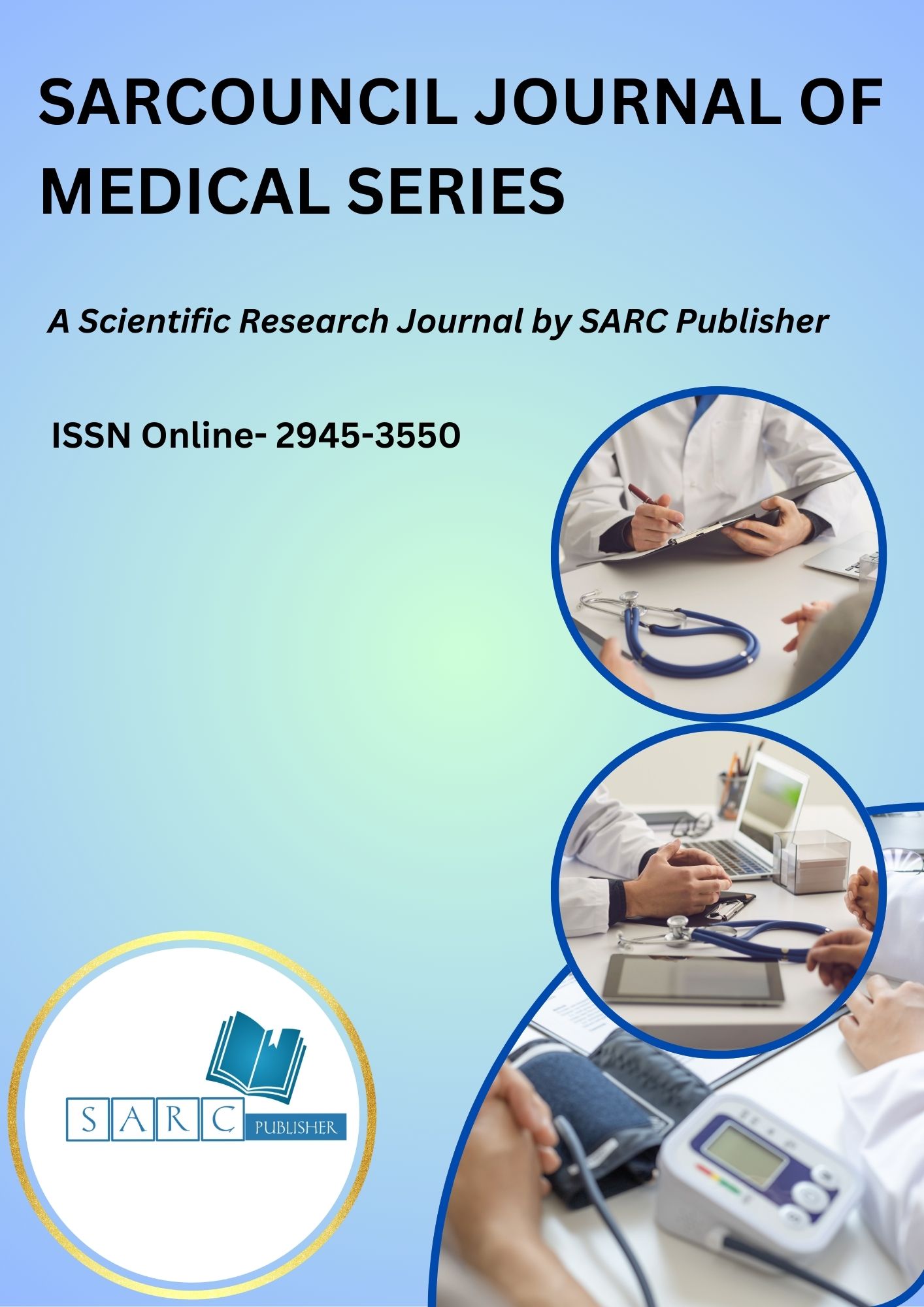Sarcouncil Journal of Medical Series

Sarcouncil Journal of Medical Series
An Open access peer reviewed international Journal
Publication Frequency- Monthly
Publisher Name-SARC Publisher
ISSN Online- 2945-3550
Country of origin- PHILIPPINES
Impact Factor- 3.7
Language- English
Keywords
- Pathology, Radiology, Serology, Surgery, Biochemistry, Biophysics, Cytology, Embryology, Endocrinology, Epidemiology, Genetics, Histology
Editors

Dr Hazim Abdul-Rahman
Associate Editor
Sarcouncil Journal of Applied Sciences

Entessar Al Jbawi
Associate Editor
Sarcouncil Journal of Multidisciplinary

Rishabh Rajesh Shanbhag
Associate Editor
Sarcouncil Journal of Engineering and Computer Sciences

Dr Md. Rezowan ur Rahman
Associate Editor
Sarcouncil Journal of Biomedical Sciences

Dr Ifeoma Christy
Associate Editor
Sarcouncil Journal of Entrepreneurship And Business Management
Describe the Complications of Anesthesia in Plastic
Keywords: Plastic Rhinoplasty; Complications; Risk factors; Quality-life scale; BMI; and Age.
Abstract: Background: It is still one of the most common aesthetic procedures done in the world – rhinoplasty. Objective: This study is interested to determine and analysis clinical findings related to 82 cases who underwent plastic Rhinoplasty.Patients and methods: A total of 82 cases who underwent rhinoplasty were recruited. The participants’ ages ranged from 25 to 45 years. Demographic and surgical data were collected from different hospitals in Iraq during a period ranging from February 2022 to December 2023. These data included age, gender, body mass index, surgical procedures, and post-operative complications. The study also examined the relationship between surgery and patients’ quality of life.Results: The study found that patients over the age of 40 were the highest, with 34 cases. Of these, 63 were female, 17 were male, and 9 were smokers. The reasons for surgery included functional (12 cases), aesthetic (6 cases), and both (62 cases). Septoplasty was performed in 6 cases. Seven cases were classified as primary, while 13 cases were classified as secondary. The prevalence of comorbidities was 54.88%. The mean operative time for closed surgery was 2.30 ± 0.14 minutes, while the mean operative time for open surgery was 2.66 ± 0.43 minutes. The anaesthesia used consisted of local anaesthesia in 17 cases, general anaesthesia in 21 cases, and sedation in six cases. A total of 12 patients in the closed group received local anaesthesia, 10 received general anaesthesia, and six received sedation. The mean length of stay was 1.31 ± 0.56 days, with a follow-up period of 9 months. The mortality rate was at least 1-2 cases. In the assessment of the quality of nose scores, it was observed that breathing difficulties increased from 2.7 in the preoperative period to 0.7 in the postoperative period. Conversely, sleeping difficulties decreased from 2.1 in the preoperative period to 0.5 in the postoperative period. Postoperative anaesthesia complications were observed in 20% of cases, with nausea and vomiting being the most common complications, affecting six cases, and infection affecting five cases. Conclusions: The incidence of major complications after rhinoplasty is low but more common in patients over 40 or those undergoing additional plastic surgery. No significant gender differences exist in the risk of complications
Author
- Dr. Ghassan A. Mohammad
- M.B.Ch.B.; F.I.C.M.S.
- I.C.U. \ (Anesthesia and Intensive Care); Iraqi Ministry of Health; Kirkuk Health Department; Kirkuk Teaching Hospital; Kirkuk Iraq
- Dr. Basma Haqi Ismael Al-Khayaat
- Specialist; M.B.Ch.B.; F.A.B.C.M.S.; C.A.B.A. & I.C.U. and Pain Management.; F.J.B.C.S. of Anesthesia and I.C.U. & Pain Management; H.D. (High Degree Diploma) in Anesthesia and I.C.U. & Pain Management
- Senior Chief Anesthesia Physician in Iraqi Ministry of Health; Iraqi Ministry of Health; Nineveh Health Department; Mosul General Training Hospital; Secialized Opthalmic Surgical Training Center; Nineveh; Iraq; Iraqi Ministry of Health of Kurdistan Erbil Health Department
- Rizkari General Training Hospital; Erbil
- Iraq
- Dr. Nawar Mardan Humood
- M.B.Ch.B.; D.A. \ (Anesthesia); Iraqi Ministry of Health; Basra Health Department; Al-Mudaina Hospital; Basra Iraq
- Dr. Ali Qais Abdulkafi
- M.B.Ch.B. \ D.C.H. \ (Pediatrics); Iraqi Ministry of Health; Kirkuk Health Department; Kirkuk General Hospital; Kirkuk; Iraq.

